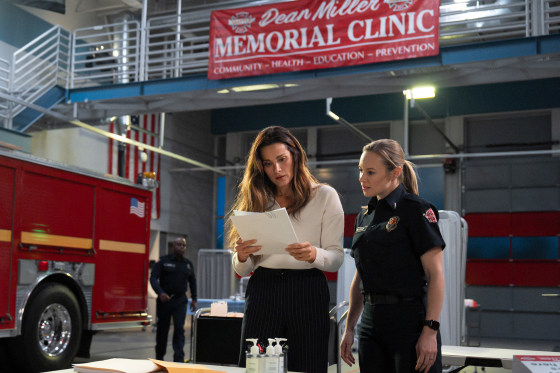
The Shocking Truth Behind the Grey's Anatomy and Station 19 Crossover Deaths: A Calculated Tragedy?
The wail of a siren, the frantic chatter of radios, the sterile smell of a hospital – these are the familiar hallmarks of the interconnected worlds of Grey’s Anatomy and Station 19. For years, these two shows have interwoven narratives, showcasing the heroism and heartbreak faced by doctors and firefighters in Seattle. But beneath the shared setting and recurring characters lies a darker truth: the crossover deaths, those moments where the personal and professional collide in the most devastating way, are not merely narrative devices, but rather calculated tragedies designed to maximize emotional impact and solidify the intertwined fate of these two series.
To understand the "shocking truth," we must first acknowledge the inherent structural advantage of the crossover. These episodes inherently amplify the stakes. A house fire becomes not just a backdrop for Station 19, but a potential threat to Meredith Grey’s sister, Maggie Pierce. A devastating car accident isn’t just a call for Andy Herrera’s team, but a desperate race against time for Amelia Shepherd to save a life. The shared universe creates a pre-existing emotional investment, making the deaths even more poignant and the audience's connection to the surviving characters more profound.
Take, for example, the tragic death of Ryan Tanner in Station 19. While the loss was devastating to Andy, his childhood friend and possible love interest, the true impact resonated across Grey’s Anatomy as well. Andy’s grief was palpable, coloring her interactions with the doctors at Grey Sloan. The loss served as a reminder of the inherent risks these first responders face, further solidifying the interconnectedness of their worlds and forcing the doctors to confront the human cost of their medical interventions. Ryan’s death wasn’t just a storyline in Station 19; it became a shared trauma, a thread weaving tighter the fabric connecting the two shows.
The calculated nature of these deaths becomes even clearer when considering the character archetypes often targeted. We often see secondary characters, well-established enough to garner audience affection, but not integral to the overarching narratives, become victims. This strategy allows for maximum emotional impact without fundamentally altering the core dynamics of either show. This is not to say the writers don't kill off main characters; they certainly do. However, the crossover deaths often function as a lower-risk, high-reward strategy for generating drama and boosting viewership. These deaths, while tragic, serve as a narrative pressure point, forcing the remaining characters to re-evaluate their priorities, confront their own mortality, and ultimately, deepen their bonds.
Furthermore, the timing of these deaths often coincides with critical plot points in both series. They are strategically placed to elevate stakes during sweeps weeks, season finales, or periods of flagging viewership. The emotional resonance of a crossover death guarantees heightened social media engagement, sparking online debates and driving traffic to the shows' digital platforms. This meticulously planned orchestration reinforces the understanding that these tragedies are not simply organic plot developments, but rather calculated moves in a larger strategy to maintain audience interest and relevance.
Of course, one might argue that death is an inherent part of both the medical and firefighting professions, and therefore, realistic depictions of these professions necessitate the occasional loss. While this is undeniably true, the frequency and timing of the crossover deaths suggest a more deliberate motivation. These deaths are not simply mirroring reality; they are amplifying it, using the pre-existing emotional investment of the shared universe to deliver a powerful, albeit often manipulative, blow to the audience's heartstrings.
In conclusion, while the emotional impact of the crossover deaths in Grey’s Anatomy and Station 19 is undeniable, a closer examination reveals a more complex and perhaps unsettling truth. These deaths are not merely tragic accidents, but carefully orchestrated events designed to maximize emotional impact, boost viewership, and solidify the intertwined fate of these two popular series. The shocking truth is not that death exists within these fictional worlds, but that it is often deployed as a calculated strategy, a stark reminder of the power of storytelling and the audience's susceptibility to carefully crafted emotional manipulation. While we may mourn the loss of beloved characters, we must also acknowledge the calculated nature of their demise, recognizing the strategic brilliance (and perhaps the inherent cynicism) behind the crossover death.
